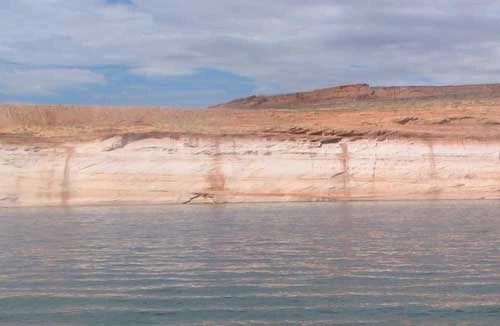Public Policy Review

This column focuses on an issue that permeates our state and regional water management challenges: uncertainty. Here are just a few of the uncertainties affecting Arizona’s demand and supply picture. Given the downturn in our national and state economies, will Arizona’s population grow slower than expected? Will water use patterns change significantly as drought continues? What water supplies will the Central Arizona Groundwater Replenishment District use to meet its longterm replenishment obligations? To what extent will we reuse our waste water? Will environmental water needs be factored into our water planning? How much and what type of water supplies will be used to meet growing demand for energy, especially given the focus on renewable energy sources? Will water supplies delivered through the Central Arizona Project be curtailed to a significant extent due to shortages on the Colorado River? What will water cost in the future? Perhaps the most fundamental question I hear asked related to uncertainty is “are we running out of water?”
Major studies are underway to help get a handle on these uncertainties. The Final Report of the Blue Ribbon Panel on Water Sustainability contains many recommendations related to water reclamation and reuse and has recommended more focused Arizonabased investigation on the water–energy nexus. The Water Resources Development Commission, whose report is expected in October 2011, is working on projections of water supplies and demands and estimates of water infrastructure costs. The Central Arizona Project continues to work on securing water for CAGRD replenishment to meet its legally mandated obligations. The ADD (Acquire, Develop, and Deliver) water process is looking at meeting future demands. But what water will actually be available for these purposes and at what cost remains unknown. Much work is focused on modeling the Colorado River and understanding the implications of drought and climate variability/change. Holding junior priority to Colorado River water, CAP has to be very concerned about shortage declarations.
I’d like to single out this last issue for further discussion because it is receiving so much media attention. On October 29, 2010, the website 247wallst.com posted the article “The Ten Biggest AmericanCities That Are Running Out Of Water”. The website bills itself as “providing insightful analysis and commentary for U.S. and global equity investors.” The ranking was based on the July 2010 NRDC (Natural Resources Defense Council) study, “Climate Change, Water, and Risk: Current Water Demands Are Not Sustainable”. The 247wallst.com report has Tucson as number eight, Las Vegas as seven; Phoenix as three; and Los Angeles number one! Four of the major cities in the Lower Colorado River Basin were among the top 10 and the reasons are related to Colorado River flows. This is some of what was written for Tucson: “Currently, the Tucson region uses about 350,000 acre-feet of water per year. At this rate, Tucson’s groundwater supply, which now provides the majority of the city’s water, has a very limited life span. In addition to this, the city is currently bringing in 314,000 acrefeet per year from the Colorado River under the Central Arizona Project. However Tucson is growing rapidly… This, combined with the political uncertainty of the Central Arizona Project allocation, places Tucson at extreme risk for future water shortages.” About Phoenix they write: “Like many of the other western cities on this list, Phoenix is extremely dependent on water imported from the Colorado River. This is because nearly half of the water the city’s residents use comes from this significant source. As the Colorado River Basin enters the eleventh year of its drought, the city’s reliance on the river may soon become a serious problem. If the drought continues, water deliveries to Arizona could potentially be cut back. To keep up a sufficient water supply, Phoenix is adopting an aggressive campaign to recycle water, replenish groundwater and try to dissuade over-consumption. Time will tell if these measures will be enough.”
The article and the NRDC report reflect the uncertainties associated with Colorado River supplies delivered through the Central Arizona Project. Regardless of inaccuracies, inconsistencies or omissions, the information presented begs the question: what are we in Arizona doing to address the uncertainties? In fact we are doing a lot. The Arizona Water Banking Authority has stored considerable water for future shortages. The seven basin states, with the Department of Interior, crafted shortage-sharing regulations designed to limit impacts to municipal water users when a Colorado River shortage is declared, something now considered more likely than just a short time ago. Utilities are engaged in scenario planning and adopting multi-pronged strategies, including increased conservation, for meeting growing demands.
However, publicly accessible information at the sites people are most likely to go for information appears limited. My searches of the CAP and Arizona Department of Water Resources websites found little information that would be handy for reporters and others interested in how Central Arizona is preparing for a declaration of shortage on the Colorado River. While we cannot necessarily reduce the uncertainties, we can and should explain to the public how the water community is addressing them. Working in partnership with others, the WRRC may need to add this task to its to-do list.

